If you want to branch your Japan travels out beyond the popular but often crowded Golden Route, you should visit Nagoya – the country’s third largest metropolitan area after Tokyo and Osaka. It’s a hidden gem centrally located between Kyoto and Tokyo on the Shinkansen Line which makes it easily accessible, and there are plenty of things to do in Nagoya, whether you’re into art, history, modern Japanese culture and architecture, science & technology, festivals, or regional Japanese cuisine! We’ve divided our most recommended 35 things to do in Nagoya into these 6 sections along with a section for guided food tours and day trips, so you can navigate to what most interests you!
Historical sights in Nagoya

The city has a rich history as the 3 key warlords who fought to unify Japan after the turbulent Sengoku period – Oda Nobunaga, Toyotomi Hideyoshi, and Tokugawa Ieyasu – were all born in the area, and during the Edo period, Nagoya Castle became the seat of the Owari branch of the ruling Tokugawa family.
Other architectural legacies in Nagoya include Atsuta Shrine, dating back almost 2000 years and often considered the second most important shrines in Japan after Ise Shrine in Mie. Also, closer to the city centre, there is Osu Kannon, a beautiful temple with photogenic bright red pillars, and its adjacent network of charming covered shopping arcades that include vintage and retro shops.
Nagoya Castle

One of the largest and most spectacular castles in Japan, as well as being a symbol of Nagoya for over 400 years, Nagoya Castle was originally constructed in 1612 by Tokugawa Ieyasu. It features a five-story main tower keep supported by fan-shaped sloping stone walls. While much of the castle was destroyed in air raids in 1945, it has since been beautifully rebuilt and restored using techniques identical to the first construction.
Although the main tower keep is currently closed for renovation, the official Honmaru Palace residence with it’s magnificent golden wall and screen paintings, and fine decorative metal fittings alone makes it worth the visit. Be sure to look out for the pair of golden “Shachi-hoko” on the castle roof while you are there. These Shachi (tiger-headed carp) are icons of the city and you’re likely to spot many Shachi designs while you’re in Nagoya.
Atsuta Shrine
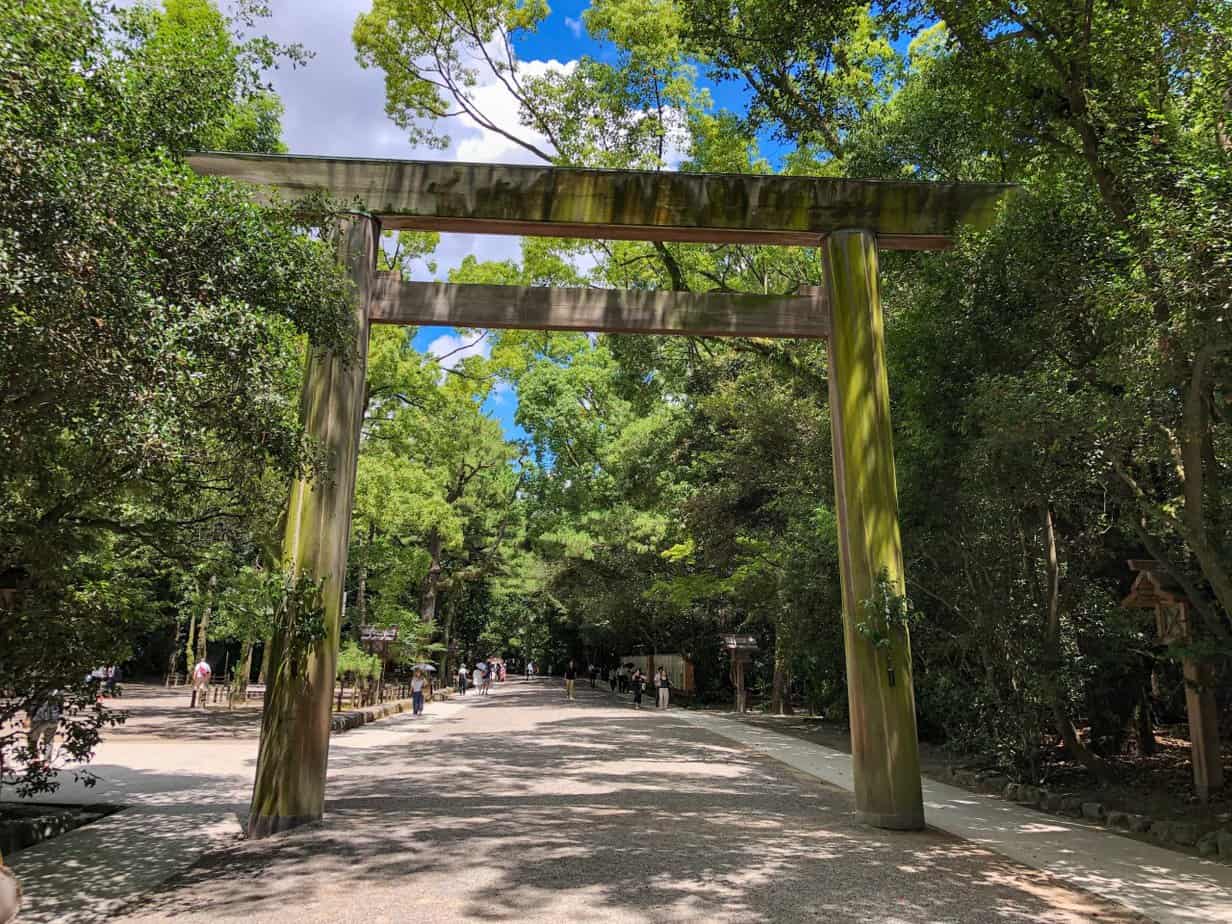
Located within a peaceful forested area home to thousand year old camphor trees is Atsuta Shrine, established in the first century AD. The shrine is of significant importance in Japan, as it is famous for preserving one of the Three Sacred Treasures of Japan, the sacred “Grass-Cutting Sword”, and where the deity “Atsuta no Okami” along with the “Five Great Gods of Atsuta” is enshrined. While the Kusanagi no Tsurugi is not on public display, you can see over 4,000 historical items at the Treasury Hall, including swords, paintings, court dance masks, and ancient documents.
Samurai fans should check out Nobunaga’s Wall at the shrine, which was built in gratitude following the Battle of Okehazama in 1560. Before the battle, Nobunaga came to the shrine to pray and then went on to defeat an invading army of 25,000 with only 2,500 of his own men by attacking the enemy main camp during a thunderstorm and taking out their leaders!
Osu Kannon

The history of Osu Kannon Temple dates back to 1333 where it was built in modern-day Hashima city and then relocated to its present location in the 17th century. The temple enshrines an important Kannon (Buddhist goddess of mercy), and has a library that has over 15,000 ancient Japanese and Chinese texts.
For many, the huge red paper lantern and 2-meter wide bell tower are the key attractions along with the chance to buy Omamori (a type of lucky charm) that brings you good luck if you carry it with you. If you are visiting on the 18th or 28th of the month, you’ll also get to see the outdoor flea market held outside the temple which is always lively and a chance to see another side of Japan.

Right next to the temple is the entrance to the Osu Covered Arcade Shopping Streets (Osu Shotengai) which you have to explore if you enjoy shopping or even window-shopping. There are over 1200 shops in the area with two main streets which are covered and car-free. In general, with some exceptions you’ll find more touristy places on the first two streets and the more you explore the other streets, the more you’ll find all manner of things. Osu is liked to Tokyo’s Akihabara in that you can find vintage clothes shops, retro video game stores, and even maid cafes.
We think the fun frenzy of the shotengai (traditional Japanese street market) is best experienced when you just amble along, popping in and out of shops, and snacking as you go on delicious street food. Go hungry; there’s a lot to taste including traditional Japanese food such as a speciality dessert called Uiro and Dango from a centuries-old shop. You can also come across stores to buy or rent Kimonos, record shops, high-quality audio equipment stores, and popular bargain stores like Komehyo which sells luxury used bags and goods.
Art, Crafts, & Gardens
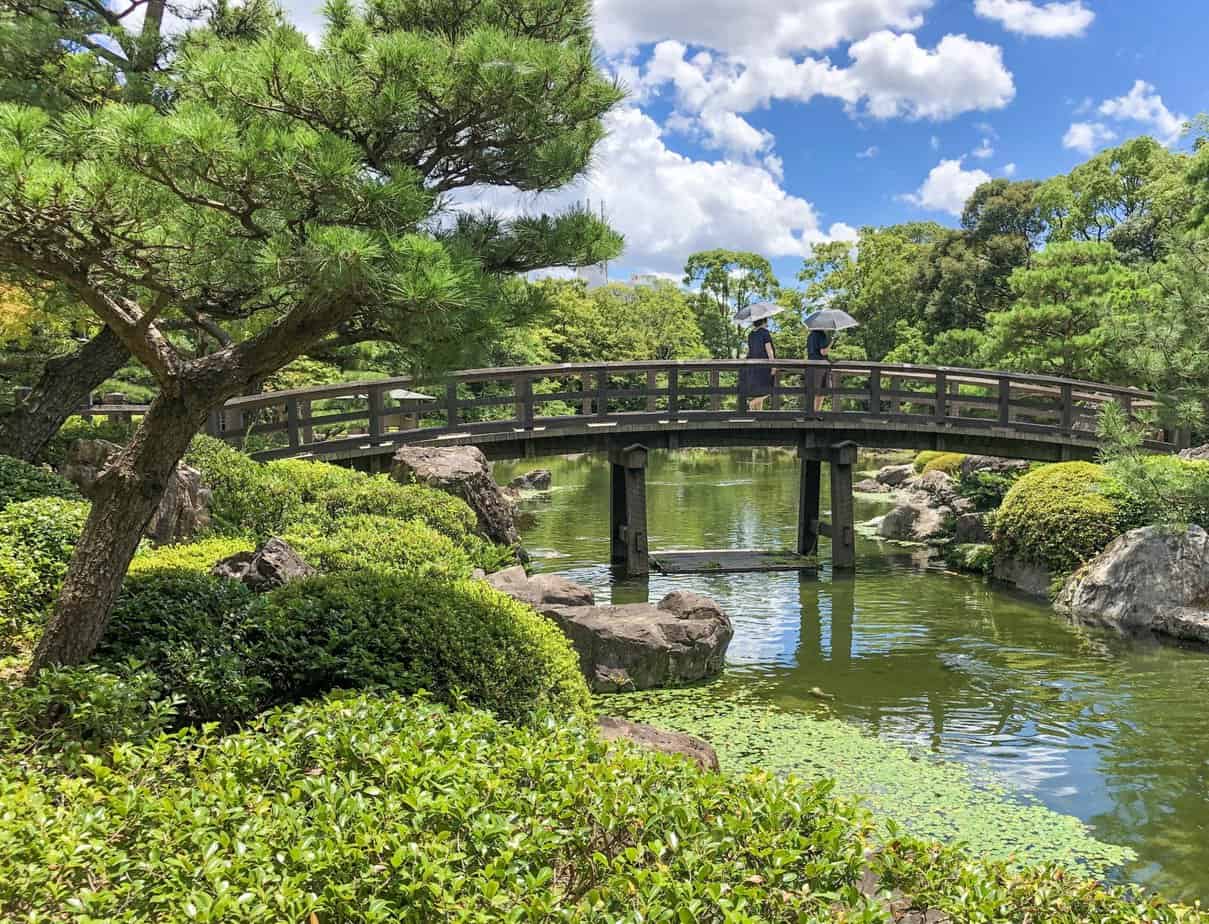
If you’re an art and crafts lover, Nagoya has much to offer. First, the Tokugawa Art Museum holds an extensive collection of Samurai artifacts and treasures, while the Aichi Prefectural Museum of Art has an outstanding collection of 20th century art works from Japan and overseas.
The city has also long been a major manufacturing centre of traditional industries. At Noritake Garden, you can discover how prestigious Noritake tableware is hand-created, and in Arimatsu see artisans producing the prized Arimatsu Shibori fabric. Finally, if you’re near Atsuta Shrine head over to Shirotori Garden which is the largest Japanese style garden in Nagoya, complete with a huge Koi pond and Japanese wooden arched bridges.
Tokugawa Art Musuem & Garden
First opened in 1935, the Tokugawa Art Museum has a collection of over 10,000 pieces, donated by descendants of the Owari-Tokugawa family. The exhibits include meticulously presevered Tokugawa treasures like Samurai armour, swords, Noh masks, lacquer furniture and calligraphy scrolls. There are also 9 national treasures such as the sections from the 12th century illustrated handscroll and literature classic “The Tale of Genji”. Although the original scrolls are seldom on display you can see reproductions and video images.
Next to the Art Museum is Tokugawaen, a beautiful Japanese garden which was part of the former Tokugawa residence, before being donated to Nagoya City in 1931. The current garden is a typical Japanese landscape garden with a central pond and seasonal flowers along with an elegant teahouse where you can enjoy the tea ceremony for an additional fee.
Aichi Prefectural Museum of Art
This centrally located prefectural art museum next to Oasis 21 in Sake is recognised for its collections and galleries of Japanese and international art. Significant works on show by artists Klimt, Picasso, Ernst and Bonnard make up the permanent collections as do precious works by Japanese artists like Takahashi, Taikan Yokoyama and Shunso Hishida. There are also temporary exhibitions based on artists and topical events with past exhibitions on Joan Miró and Studio Ghibli. If you’re looking to get a fantastic view across Sakae, we also recommend heading to the observation gallery on the 10th floor.
Noritake Garden
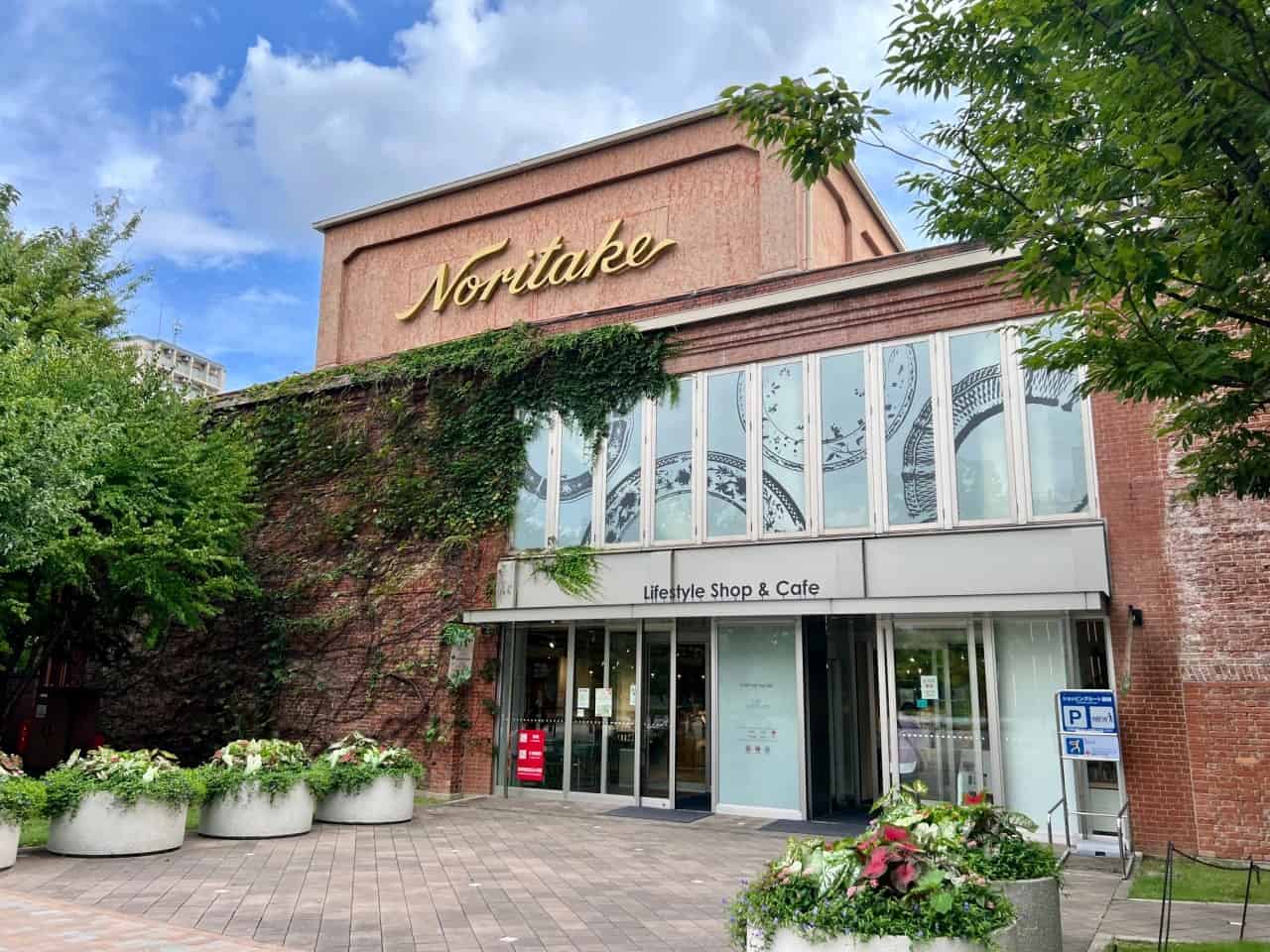
Noritake is a leading Japanese ceramics maker originally started by two brothers over 100 years ago who prized elegant and dynamic designs. The award-winning garden built on the site of the former Noritake factory grounds, which includes a museum where you can find a range of antique Noritake vases, jars, and dishes on display. Aside from strolling in the beautiful garden is the Craft Centre, where you observe how the porcelain pieces are created or even try glazing your own piece.
Arimatsu Narumi Shibori Tie-Dyeing
The suburb of Arimatsu is located in the south east of Nagoya and was once a town built on the Tokaido Highway, which connected Kyoto and Edo (present day Tokyo). A highlight of visiting is a scenic narrow street, where you can walk between the picturesque wooden houses, shops, and warehouses from the Edo period. At the Arimatsu Narumi Shibori Musuem, you can see artisans demonstrating the highly-prized dyeing techniques that the town became famous for, and join a workshop where you can create your own tie-dyed handkerchief. There are also many shops in Arimatsu where you can admire and buy your own tie-dye souvenir, clothing or accessories.
Shirotori Garden

This elegant Japanese landscape garden is a ten-minute walk from Atsuta Shrine, and covers an area of almost 4 hectares. There is plenty of space to relax and admire the features inside which symbolise the geographical features in the Chubu (central Japan) region, such as the main pond which represents the waters of Ise Bay. You can really enjoy your time here strolling past the stream and little waterfalls and taking photos by the bamboo forest backdrop. Each season brings new flowers to admire like the cherry blossoms in spring, hydrangeas and water lilies in summer, as well as the splendid autumn leaves.
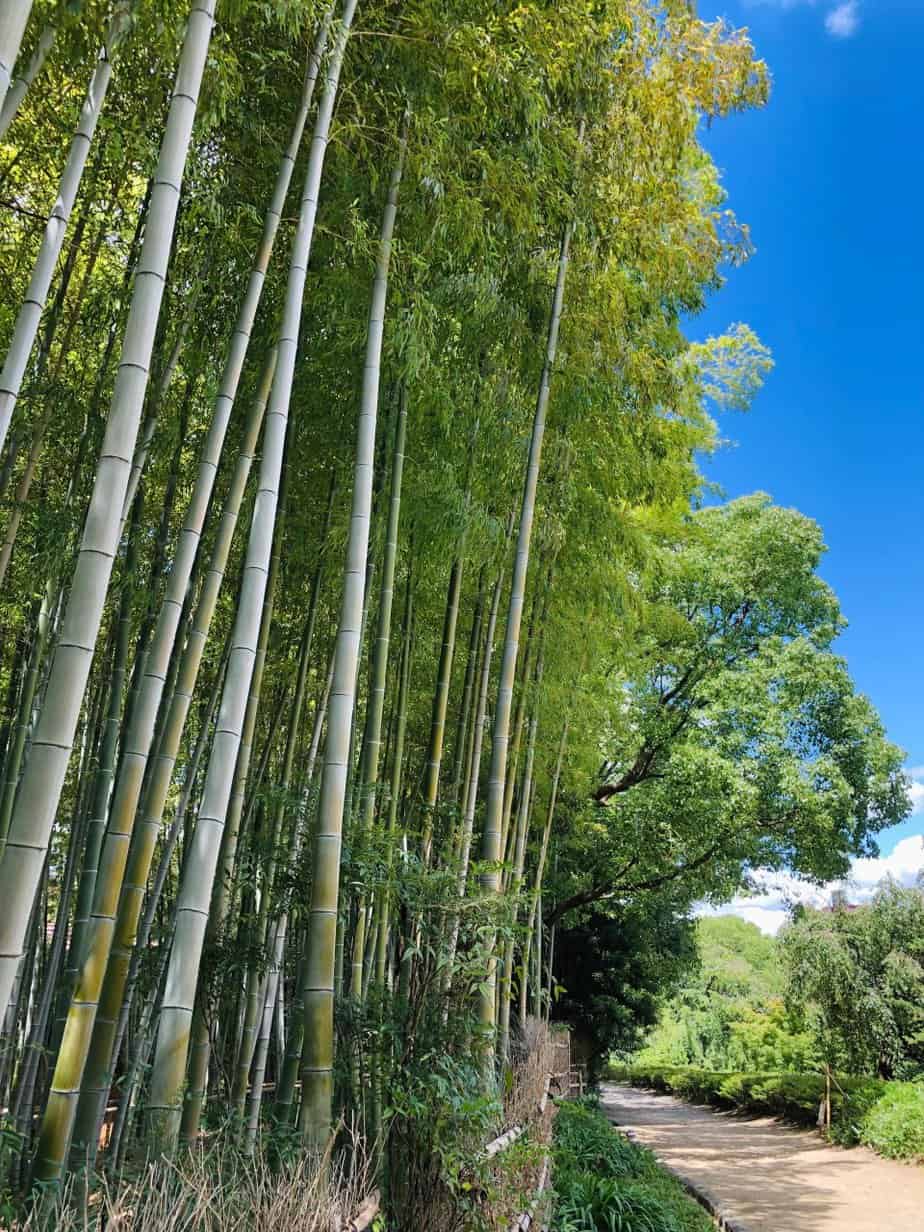
At the centre by the Koi swimming in the pond is the Seiu-Tei tea ceremony rooms which are available for public hire at an extremely reasonable cost. Incidentally Seiu-Tei was designed after the image of a swan (Shirotori) from where the garden gets its name.
Modern Japan and Architecture

When you think of modern Japan, you probably picture skyscrapers, buildings colourfully lit up at night, the Shinkansen bullet train, and quirky architecture. Well, guess what? Nagoya has it all! Right outside the Shinkansen station, you have the 245 metre high JR Twin Towers and the slightly taller 247 metre glass paneled Midland Square which houses the tallest open-air observation deck in Japan. Across the street, you have the slightest shorter sleek Dai Nagoya Building and nearby you have the ultra-cool Mode Gakuen Spiral Tower and the 40-storey Lucent Tower which is said to look similar to the sail of a ship.

Meanwhile, in downtown Sakae, there is the avant-garde Oasis 21 shopping centre where you can walk around its glass roof “Spaceship Aqua” that’s filled with a shallow layer of water and lit up in bright colurs each night. Close to Oasis 21 is the newly named Mirai Tower which most long-term residents will still faithfully call the “TV Tower”, and it’s actually the oldest TV Tower in Japan. One more structure you’d likely want to check out is Sunshine Sake right outside Sakae Station with a 42 metre Ferris wheel mounted to the building and illuminated by bright LEDs all evening.
We couldn’t round off this section on Modern Japan without talking about Ghibli Park which opened in November 2022. As you may expect, this park is dedicated to the popular animated movies by Studio Ghibli. Current park areas include the Hill of Youth featuring the elevator tower seen in Howl’s Moving Castle, and Satsuki and Mei’s House (from My Neighbour Totoro) in Dondoko Forest.
Science & Technology

Since the Meiji Restoration, Nagoya has been an industrial hub and constantly attracted the brightest minds to engineer the future of car manufacturing, machine equipment, and aviation. Industry giants such as Toyota, Lexus, Denso and Mitsubishi Aircraft Corporation all have their headquarters in the Nagoya area. Unsurprisingly, there are several museums in Nagoya dedicated to science and technology.
The Toyota Commemorative Museum of Industry and Technology
Two things many people don’t know about Toyota are that it’s headquarters are in a city renamed “Toyota” after the brand, and this multinational corporation started off as a automated textile manufacturer almost 100 years ago. The Toyota Commemorative Museum of Industry and Technology, also know as the Techno Museum, is located inside Nagoya City and about 20 minutes walk from Nagoya station. At the Techno Museum, you’ll be able to learn more about the region’s most well-known company, and how it developed from a weaving plant to a robotics and vehicle focused factory. There are over 4000 exhibition pieces in the museum ranging from displays of original equipment to instructive videos and interactive exhibits.
Nagoya City Science Musuem
Another popular museum is Nagoya City Science Museum which is said to be one of the best in the country. You can easily recognise it from its giant silver globe housing what was previously the largest planetariums in the world, and it’s plenty of fun for all ages with displays such as the “Tornado Lab” which replicates 9-meter tall twisters, the “Electric Discharge Lab” and the “Deep Freezing Lab” where you can experience an aurora in a room that is set to -30°C. It should be noted that although the shows at the Planetarium are only in Japanese, you can still enjoy the stars and elements on the massive screen projection.
The SCMAGLEV and Railway Park
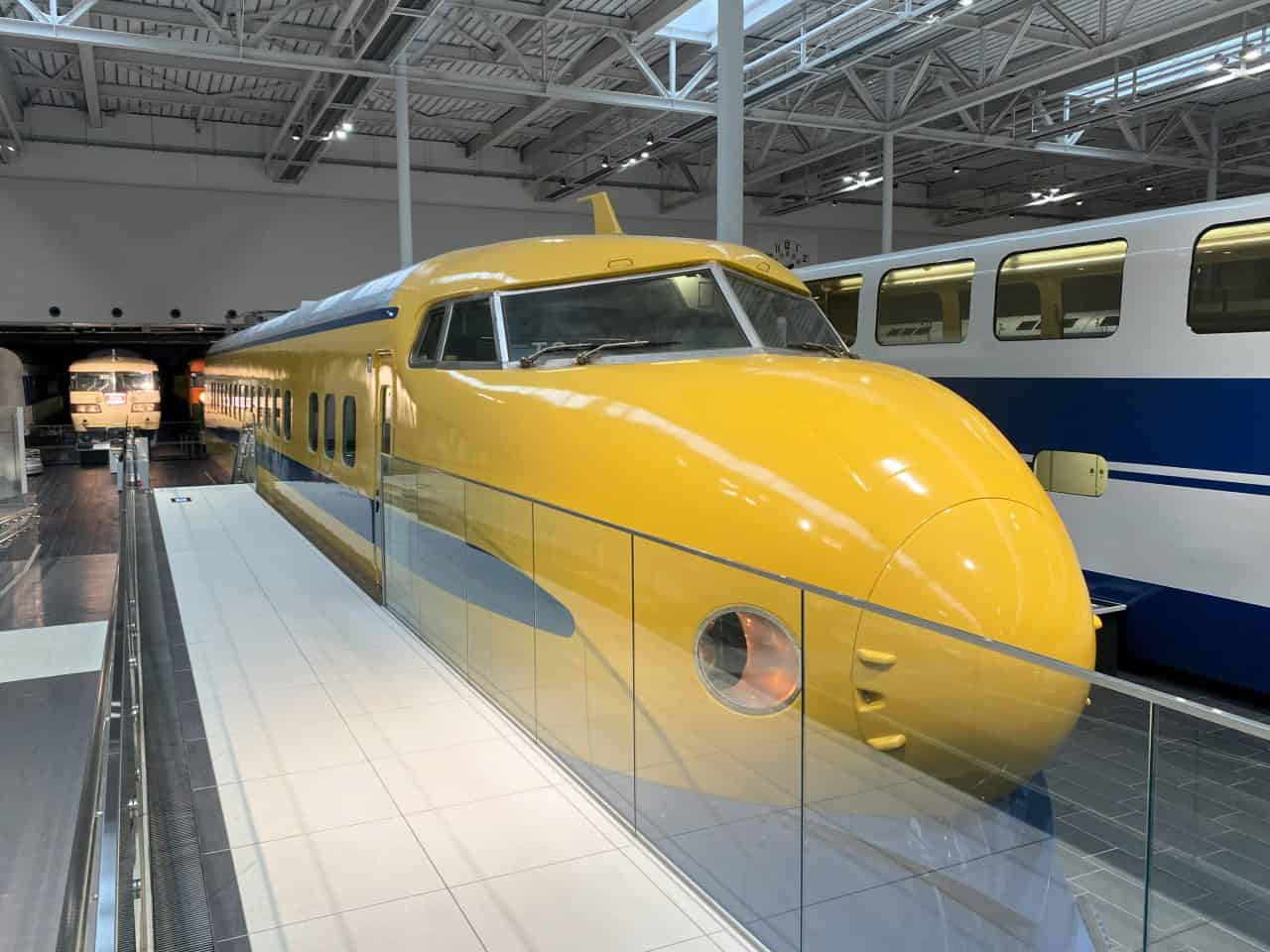
While the bullet train especially inspires awe, those fascinated by any of Japan’s emblematic trains will want to check out The SCMAGLEV and Railway Park. Built by JR Central (Central Japan Railways) back in March 2011, the sprawling museum is home to a collection of 39 retired trains, including historic steam locomotives, multiple generations of the shinkansen, the famous Doctor Yellow – even a prototype of the stunning SG MAGLEV. Walk around them, climb inside and discover cool facts when you stroll the grounds on your own or set yourself up for the self-guided audio tour, led by well-placed QR codes.
Don’t miss the dedicated exhibit that details the workings of the superconducting magnetic levitating train, which can reach 603 kph all while hovering 10cm above the tracks. Sit in a simulator designed as a cross section of the MAGLEV and watch out the windows as it whips along at truly mind-blowing speeds. Another popular attraction: the Shinkansen Driving Simulator and the Train Crew Simulator. Steer and accelerate the trains from life-size driving compartments, dress up like the train crew and give passenger announcements.
Nagoya Meshi Cuisine

For domestic tourists, a top reason to visit Nagoya is actually the local cuisine that is called Nagoya Meshi where Meshi means food. The city has earned a reputation in Japan for its food culture which is one of the most diverse you will find. A key ingredient in several of the dishes is dark soybean miso with its distinctive strong flavour. While there are potentially as many as 20 dishes, here are the main ones you need to know and try when you visit Nagoya:
- Kishimen Noodles (flat noodles in a broth with dried bonito flakes and some veggies)
- Misonikomi Udon Noodles (thick udon noodles simmered in a red miso and dashi broth with some green onions, mushrooms, fish cake, etc.)
- Hitsumabushi (bite-sized grilled eel on rice in a bowl, which is enjoyed in three different ways – as it is, with condiments, and by pouring dashi broth over)
- Tebasaki Chiken Wings (double fried chicken wings with sweet and spicy sauce and white pepper)
- Tenmusu (rice balls wrapped with nori seaweed and topped or filled with shrimp tempura)
- Miso Katsu (panko breaded deep-fried pork cutlets with a rich, savoury miso-based sauce)
- Uiro / Uiro mochi (a chewy Japanese steamed cake usually in a rectangular shape flavoured with azuki redbeans, matcha green tea, or chestnut, etc.)
- Ogura Toast (toasted thickly sliced Japanese bread called shokupan usually topped with sweet ogura red bean paste, butter, and whipped cream, but those toppings can be served separately)
Guided Food Experiences in Nagoya
If you would like to try Nagoya Meshi but not sure where to eat, why not take a food tour? These Nagoya food & drink tours are offered in English and you can enjoy guided food experiences in Nagoya without the hassle.
Nagoya Festivals and Events

There are several Nagoya festivals and events which make the city worth visiting. A top recommendation for anyone travelling in Japan in July is to see the quintessential Japanese sport of Sumo at the Nagoya Basho Sumo Tournament, one of the six tournaments held in Japan every year. Also, in July, there is the Nagoya Port Fireworks festival, which takes place on the third weekend and attracts over 300,000 people. It’s a typical Japanese summer festival with food stalls and you’ll see summer dances before a spectacular fireworks display above the harbour.
August is another special time to be in Nagoya. The World Cosplay Summit held towards the start of the month brings together cosplayers from around the world who attend the final rounds of the competition in Nagoya. Then, you have the Nagoya Castle festival on the castle grounds which are lit up in the evening by lights and paper lanterns. Highlights include Obon dancing and some special games such as ninja star throwing!
Day Trip Base

The location of the city between Tokyo and Kyoto makes Nagoya a popular hub for travellers. Apart from a stop-off point between the Golden Route locations, the city is convenient for taking nearby day trips. The time of year and your interests will decide what day trip is best for you, but some of the choices available include the sacred Shinto shrine at Ise, the pottery walks and art in Tokoname, Hida Takayama, and the hot spring town of Gero Onsen.
Our complete list of the top 35 things to do while in Nagoya
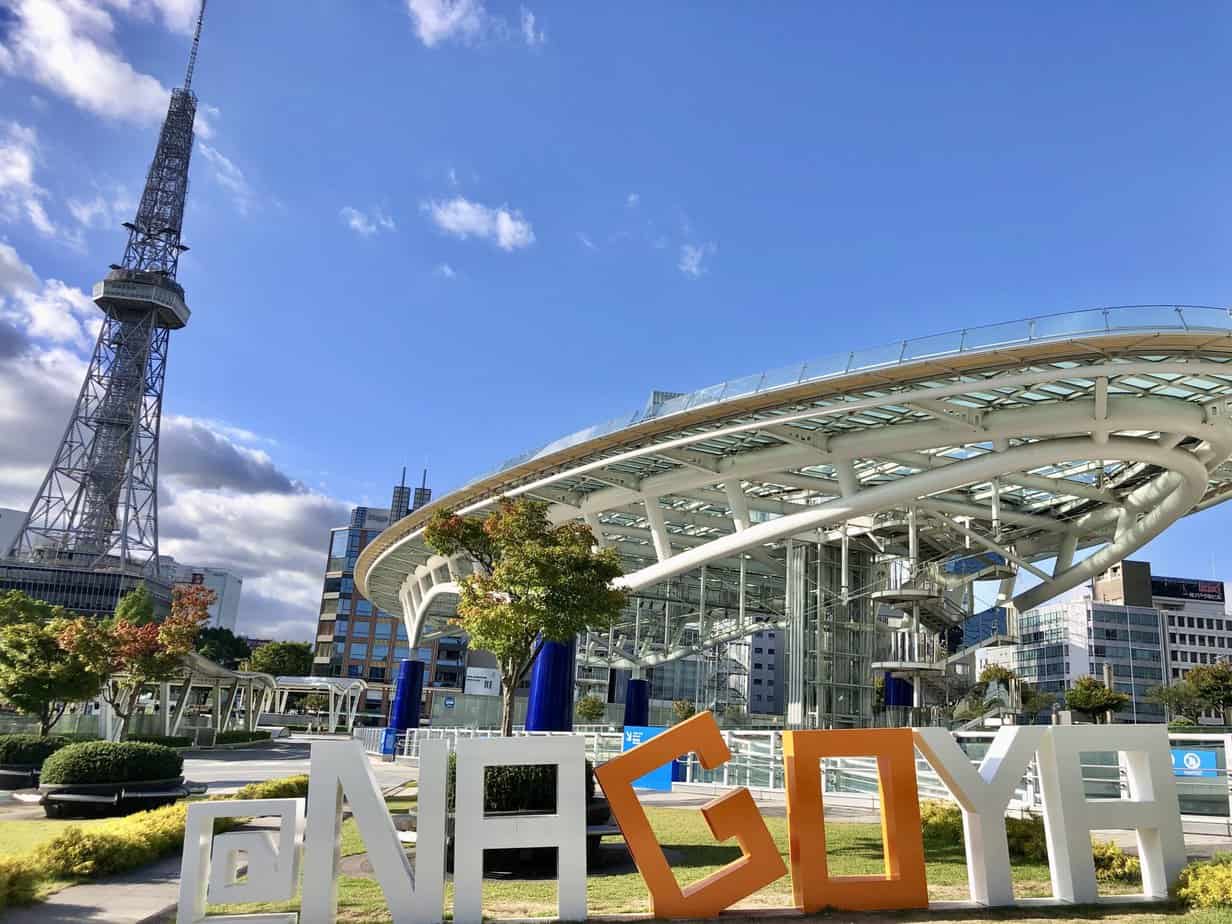
We recommend visiting or trying the following when you are in Nagoya. Since several of our team live in the city, if you have any questions about these attractions, feel free to contact us.
- Nagoya Castle
- Atsuta Shrine
- Osu Kannon & Shopping Streets
- Nittaiji Temple
- Tokugawa Art Museum & Garden
- Aichi Prefectural Museum of Art
- Noritake Garden
- Arimatsu Narumi Shibori Tie-Dyeing Museum
- Shirotori Garden
- JR Twin Towers
- Midland Square Sky Promenade
- Mode Gakuen Spiral Tower
- Oasis 21 & Mirai “TV” Tower
- Sunshine Sakae & Don Quijote
- Ghibli Park
- Legoland Japan
- Toyota Commemorative Museum of Industry and Technology
- Toyota Automobile Museum
- Nagoya City Science Museum
- The SCMAGLEV and Railway Park
- Nagoya Meshi (Nagoya Cuisine)
- Nagoya “Morning” Breakfasts & Komeda Coffee
- Yanagibashi Central Market for fresh fish and seafood
- Endoji Temple & Endoji Shopping Street
- Day trip to Nakasendo Way (Magome-Tsumago Trail)
- Day trip to Nishio City for Matcha
- Day trip to Inuyama Castle & Ena Gorge
- Day trip to Tokoname for Tokoname Ware & Tokoname Pottery Path
- Day trip to Himakajima island
- Day trip to Nabana no Sato, Nagashima Resort in Mie
- Day trip to Ise Grand Shrine & Mikimoto Pearl Island in Mie
- Day trip to Seki in Gifu for knives, samurai swords and swordsmiths
- Day trip to Hida Takayama in Gifu
- Day trip to Shirakawago in Gifu
- Day trip to Gero Onsen Hot Spring in Gifu
Top tips on getting around Nagoya
The subway system in Nagoya is easy to navigate as there are few lines and each station has a designated number as well as the name written in English. One more way to get around without having to change train lines especially when heading to Nagoya Castle or the Tokugawa Art Museum is the Nagoya Route Bus Meguru Service which has a 1 day pass available for 500 yen. It also provides you with small discounts on entrance fees and on some restaurant meals too!
We hope that you found this guide to Nagoya helpful. If you are thinking about traveling to Japan soon, we would recommend reading through our Japan Travel Tips. Also, if you’re wondering where to stay in Nagoya, we’ve got you covered in our post of the best 15 hotels in Nagoya.
Finally if you are looking for more travel tips and travel discounts for your upcoming Japan trip, please subscribe to our Japan Travel newsletter using the widget below.


